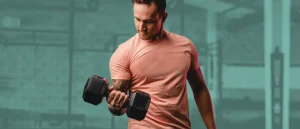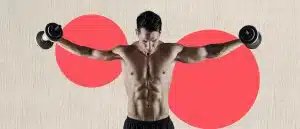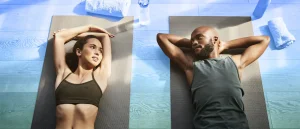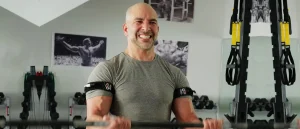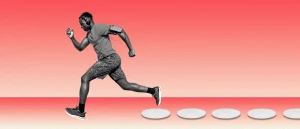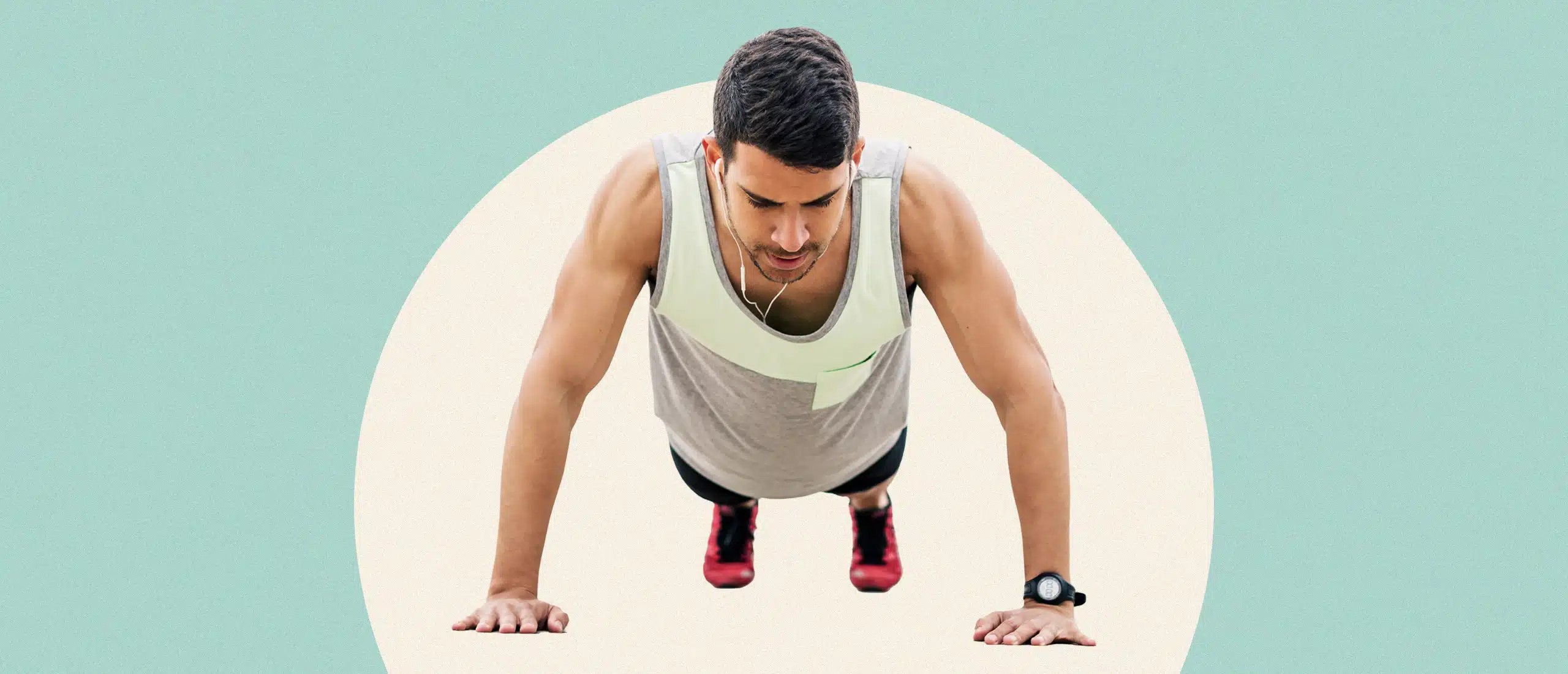
The 30 Best Bodyweight Exercises to Build Serious Muscle
Fast Facts
- Bodyweight exercises help you build muscle without any equipment.
- They increase your mobility and stability to help you move better in everyday life and in your workouts.
- Bodyweight training is great for all levels and can be modified or progressed to match your needs.
When you think about building muscle, visions of pumping iron and heavy barbell training come to mind. You don’t need a full gym to get results. One of the best ways to build muscle, burn fat, and get in great shape is to perform bodyweight exercises.
Here’s everything you need to know about bodyweight exercises to optimize your strength routine from home.
What is Bodyweight Training?
Bodyweight training is any workout that uses your bodyweight as resistance to improve strength, mobility, coordination, and overall fitness. Popular bodyweight training practices include calisthenics, plyometrics, yoga, and pilates.
If you’re thinking bodyweight training is only for beginners, come again. Bodyweight training is the foundation that solid gains are built on. It can elevate your strength, mobility, and body awareness at any level. Here’s how.
Benefits of Bodyweight Exercises
Here are four reasons to give bodyweight training a try.
Accessible
You can perform bodyweight exercises anytime, anywhere—no equipment needed. Better yet, bodyweight training can be modified to any level. As you build strength, there’s always a progression to keep you challenged.
Increase Mobility and Stability
Mobility and stability are essential elements of the way we move every day.
Bodyweight exercises build mobility and improve your movement quality. Plus, they put your stability to the test by getting multiple muscle groups involved.
Develop Technique
Bodyweight training in a great way to hone your form. It puts less strain on your body, which makes it a great way to practice your technique before stacking on the weight. Less stress also means you can recover quicker and do bodyweight exercise more frequently than weight lifting.
Build Functional Strength
The strength, mobility, stability, and technique you gain during bodyweight workouts all transfer to your everyday life. Want to pick up your kids, carry groceries, or open stubborn pickle jars without making an ugly face? Bodyweight strength training can help with all that and more.
Can Bodyweight Exercises Build Muscle?
TL;DR: yes. Bodyweight exercise can be used to build muscle strength and mass. One study found that muscle growth is possible without lifting weights (1), but you have to take a targeted approach to see results.
To build muscle, move through a full range of motion. Maximizing your range of motion will help you stimulate more muscle fibers with each rep.
To continue building strength over time, challenging your muscles over time is key (2). To do it use the concept of progressive overload: forcing your body to work harder than before. After a hard workout, your muscles will recover and adapt to better handle that challenge in the future.
Apply progressive overload to your workouts by either increasing the time under tension, performing more reps or sets, or increasing the difficulty of the movement.
Best Bodyweight Exercises for Building Muscle
We’ve compiled a list of the 30 most effective muscle-building bodyweight exercises together in this convenient cheat sheet. Use it to create your own bodyweight workouts.
1. Pushup
How To Do It
- Start in a high plank, with wrists stacked below shoulders (or just slightly wider), feet together, and back straight.
- Keep your core tight and lower your body with control.
- Lower your body until your chest hovers an inch or two above the ground, pause for one second here.
- Explosively drive up by extending your arms.
- Recenter in a solid high plank before repeating your next rep.
Why It Works
Pushups build your chest, triceps, and shoulder (especially scapular stability) strength. That upper body strength directly translates to pushing movements like bench press.
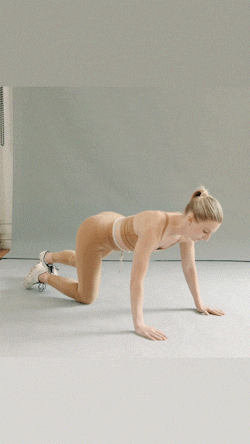
2. Decline Pushups
How To Do It
- Elevate your feet on a sturdy surface with your hands shoulder width apart and wrists stacked directly below your shoulders. Keep your back straight, and hips neutral—your body should form a straight diagonal line from heels to head.
- Lower your body under control, then push back up until your arms are straight but not locked.
- Squeeze your upper chest and triceps at the top.
Why It Works
Decline pushups are a great way to make pushups harder once you’ve mastered them. Because of the elevated foot position, it’s more demanding on your shoulders and upper pecs.
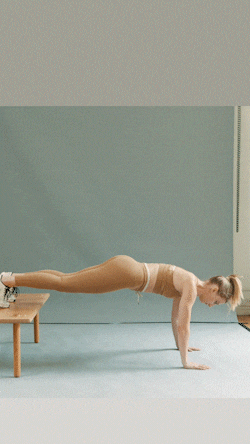
3. Bodyweight Skull Crushers
How To Do It
- Start in an elbow plank position, elbows directly below your shoulders, glutes tight.
- Keeping your core tight, straighten your arms, pressing through your hands to elevate your torso.
- Pause for one second, then lower to elbow plank position with control.
Why It Works
This move attacks all three heads of your tricep. If it’s too challenging, modify by doing it in an incline position with your hands elevated on a sturdy surface or bench.
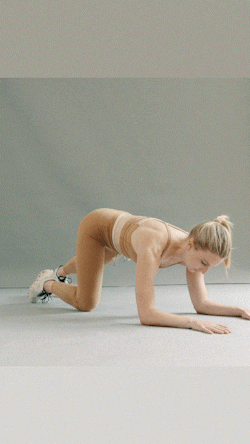
4. Dolphin Pushups
How To Do It
- Begin in a forearm plank.
Push your elbows into the ground, and press your chest towards the floor, pushing your hips up towards the ceiling. Feel free to bend the knees if the hamstrings are tight. Enjoy this stretch in your back, hamstrings, and calves. - Return to your forearm plank.
- Shift your body forward as if you’re sawing the floor. Your shoulders will pass over your elbows.
- Shift your weight back to stack your shoulders over elbows, and repeat.
Why It Works
Dolphin pushups are a dynamic forearm plank. By starting in dolphin pose you increase mobility, and by finishing in a forearm plank you fire up the shoulders—resulting in a move that’s exceptional for overall shoulder health.
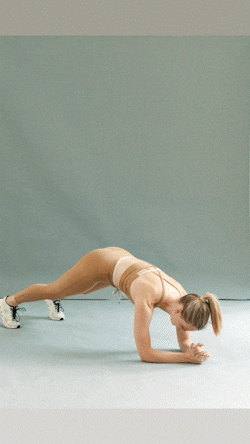
5. Bench Dips
How To Do It
- Find a sturdy elevated surface you can place your palms on. Ideally a surface you can grip at your sides, like the end of a bench or a chair where you can take a neutral grip (palms facing in). placing your palms down with fingers stretching behind you which can put more pressure on your wrists.
- Get into position with your hands firmly on the surface and feet in front of you. Bend your knees, or straighten your legs resting your weight in your heels to make it more challenging.
- Keeping your chest tall and core tight, bend at your elbows to lower yourself with control.
- Come down until your arms are about parallel to the ground, then drive yourself back up, flexing your triceps to finish.
Why It Works
Bench dips put more emphasis on triceps than a traditional dip which stress your chest and front deltoids more. Once you have them down, load up with plates on your lap.

6. Up Down Planks
How To Do It
- Start in a high plank, with wrists stacked below shoulders (or just slightly wider), feet together, and back straight.
- Keep core tight and fight to keep your hips stable as you lift one hand off the ground and lower to rest on your forearm.
- Lift the other hand off the ground and lower to rest your forearm, finding an elbow plank position. Pause, squeezing core and glutes.
- Return to high plank by lifting one forearm off the ground, extending your arm, and placing your hand directly under your shoulder.
Repeat with the other arm, to return to high plank position.
Why It Works
Up down planks shift from a stable, quadruped position to an unstable, tripod position. As you shift between stable and unstable positions, you’ll activate your shoulders, core, and hips to fight for stability.
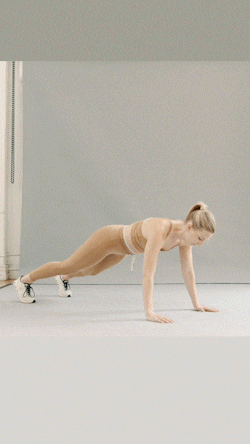
7. Reverse Crunch
How To Do It
- Lay on the ground with your feet completely straight.
- Begin by curling your hips up and raising your legs towards the ceiling.
Flex your abs hard at the top, then lower under control. - Return to starting position before performing another rep.
Why It Works
Since reverse crunches involve tucking your pelvis to curl your hips up, they toast your lower abdominals. This particular movement is a tough one to nail, so feel free to place your hands at your sides as you build up the strength.
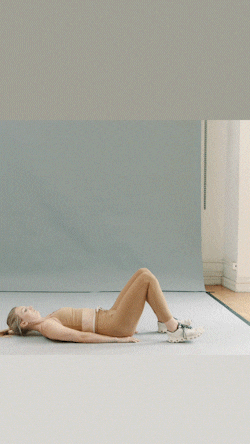
8. Deadbugs
How To Do It
- Lie face up with knees bent at 90 degrees, and stacked over your hips. Straighten your arms and extend above you, aligning your hands with your shoulders.
- Extend your left leg out straight, simultaneously extending your right arm overhead. Move with control, keeping your lower back pressed into the floor until both are hovering a few inches over the ground.
- Bring your arm and leg back to the starting position.
- Repeat on the other side, extending your right leg and left arm.
.
Why It Works
Deadbugs teach you to effectively move opposing limbs in tandem while keeping your core stable and your back protected, a skill helpful during running, walking, and other sports.
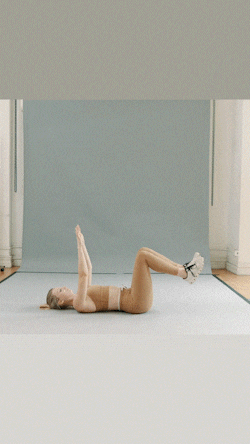
9. Quadruped Shoulder Taps
How To Do It
- Begin on your hands and knees, with your knees under your hips and wrists under your shoulders.
- Push your body away from the floor by corkscrewing your hands into the ground.
- Press into your toes to lift your knees, hovering one inch off the floor.
- Lift one hand to tap the opposite shoulder.
- Lower with control, and repeat on the other side.
Why It Works
A quadruped position evenly disperses your weight between your upper and lower body which makes it perfect for targeting your transverse abdominus. Add a shoulder tap, and you get your obliques fired up, too, for an all-around core workout.
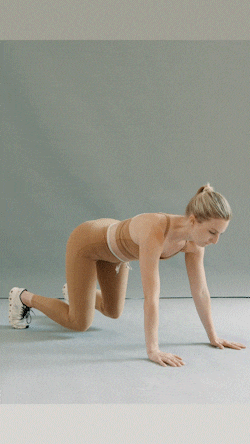
10. Bodyweight Squat
How To Do It
- Start with feet shoulder-width apart, and toes pointed slightly out.
- Push your hips back, as if sitting in a chair. Lower yourself until your hips are parallel to the ground.
- Drive through your heels, flexing your quads and glutes to finish.
Why It Works
Bodyweight squats are one of the best exercises to build strength in your legs, glutes, and core. They help build the functional mobility to move better to sit and stand throughout the day. Plus, they build your fitness foundation so you can do more advanced exercise variations with confidence.
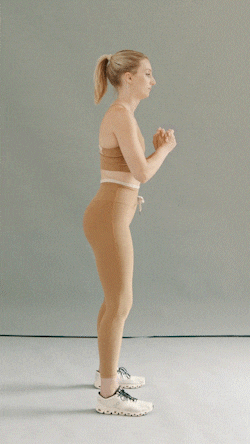
11. Walking Lunges
How To Do It
- Stand up straight with your feet shoulder-width apart. Your hands can stay by the side of your body, or rest them on your hips.
- Step forward with your right leg, putting the weight into your heel.
Bend your right knee, lowering it until it’s parallel to the floor. - Your upper and lower legs should form a 90-degree angle, on both your right and left leg.
- Take note of your body position, and adjust your next step if needed.
- Push through with your right heel to come back up, and bring your right leg forward, flexing your glute to finish.
- Step forward with your left leg, repeating the movement on the left side.
- Repeat this movement, walking forward as you lunge.
Why It Works
Walking lunges are a unilateral exercise, which means they help build single-sided strength and mobility in your quads, glutes, and hamstrings. Unilateral strength can translate to everyday activities like walking and running, and help prevent muscle imbalances.

12. Reverse Lunges
How To Do It
- Start by taking a long stride backward with your right leg.
- Firmly plant your toe down, then lower yourself until your left thigh is parallel to the floor.
- Your upper and lower leg should form a 90-degree angle, on both your right and left leg. Take note of your body position, and adjust your next step if needed.
- Push through with your left heel to come back up, and bring your right leg forward, flexing your glute to finish.
- Repeat movement on the other leg.
Why It Works
This single-leg movement emphasizes the glutes more than the quads due to the motion of you stepping backward rather than forward.

13. Lateral Lunges
How To Do It
- Begin with your feet together, then take a wide step out to your left, firmly plant your left foot on the ground and bend your left knee.
- Push back with your hips as if you’re sitting in a chair.
- Push off your left foot and return to the starting position.
- Repeat the movement, alternating sides.
Why It Works
Lateral lunges are great for working the inner thighs (adductors) and the glutes. They also help improve athletic performance for sports that require moving side to side like basketball, tennis, and soccer.
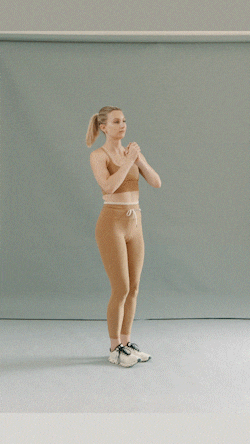
14. Bulgarian Split Squat
How To Do It
- Position your back foot up on a bench by planting either the top of your foot or on the ball of your foot. Then step out about 2-3 feet with the other foot.
- Lower yourself down with control while keeping the back knee bent, and front knee behind your front toes as you descend.
- Drive through your front heel to return to standing, flexing your quad and glute to finish.
Why It Works
Bulgarian split squats use an elevated surface to build strength and muscle in your legs. It also can improve your hip mobility and correct muscle imbalances between your two sides.
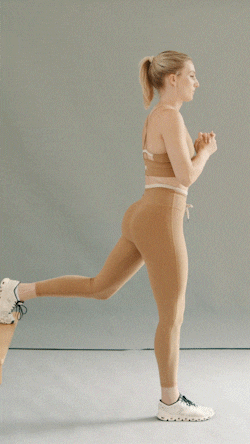
15. Step Ups
How To Do It
- Start by placing your foot on a low step, box, or bench.
- Keeping your chest tall and core tight, lean into the heel of the front leg and push off of it to step up.
- Flex your quad and glute at the top of the movement, then lower yourself with control before performing another rep.
Why It Works
Step ups are perfect for building single-sided strength. By working on two different levels, this exercise amps up the challenge on your quads, hamstrings, and glutes. Plus, it’s great for overall lower body conditioning.
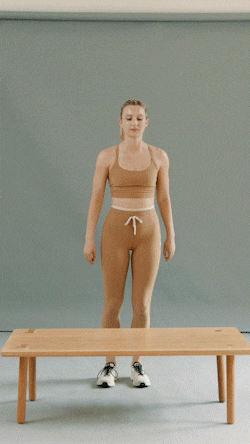
16. Glute Bridge
How To Do It
- Lay on your back with your knees bent, core engaged, and lower back pressed into the floor.
Drive your hips off the ground by squeezing your glutes. - Stop when you reach natural hip extension, and don’t overextend your lower back.
- Pause at the top, squeezing your glutes.
- Slowly lower to the starting position.
Why It Works
Glute bridges teach you how to use your glutes and core in tandem, and how to effectively achieve hip extension which is essential for squats and deadlifts.
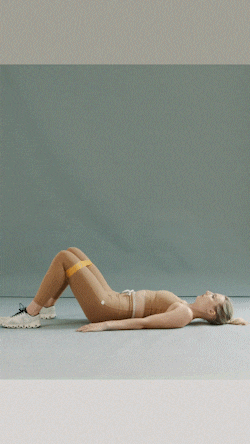
17. Hip Thrust
How To Do It
- Start seated on the floor, knees bent, and feet shoulder-width apart.
- Your upper back should be resting against the edge of the weight bench in the center of the bench.
- Press through your heels and squeeze your glutes to press your hips up until they’re in line with your shoulders and knees.
- Slowly lower until your hips are a few inches off the floor.
Why It Works
Hip thrusts progress a glute bridge by elevating the move to make it more challenging, and improve your range of motion.
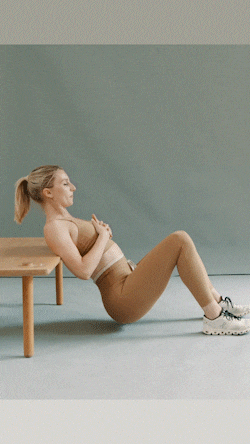
18. Single Leg Hip Thrust
How To Do It
- Start seated on the floor, knees bent, and feet shoulder-width apart. Your upper back should be resting against the edge of the weight bench in the center of the bench.
- Lift one leg off the ground, keeping your hips and core tight so your body doesn’t shift towards your supporting leg.
- Press through your supporting heel and squeeze your glutes to press your hips up until they’re in line with your shoulders and knees.
- Slowly lower until your hips are a few inches off the floor.
Why It Works
The unilateral version of the hip thrust puts the emphasis on one glute at a time. Building up your strength on each side helps to correct imbalances.

19. Plank
How To Do It
- To start the exercise, get into a high plank position with your palms stacked directly below your shoulders, and legs straight.
- Tuck your tailbone slightly by maintaining tension in your glutes and core.
- Press your heels towards the wall behind you, and roll your shoulders back to activate your lats. Hold here.
Why It Works
Core stability is your friend when it comes to literally any type of exercise—speed, power, and strength all depend on it—and planks build it.
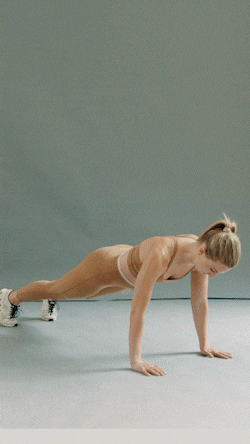
20. Side Plank
How To Do It
- Lay on your side with your knee straight, and prop your upper body up with your forearm.
- Stack your elbow below your shoulder, resting your forearm directly in front of you.
- Keeping your core tight and glutes squeezed, lift your hips up and forward so that your body is in a straight line.
- Maintain tension in your obliques the entire time.
Repeat on the other side.
Why It Works
Side planks are a great move to strengthen your core without stressing your back, while simultaneously building your quadratus lumborum, which helps to support your spine.
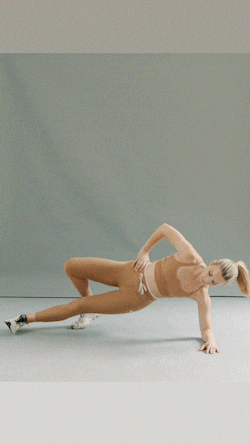
21. Side Plank Leg Raise
How To Do It
- Get into a side plank position.
- Keeping your abs tight, raise your top leg up, driving your energy through your heel.
- Raise your heel up as high as you can.
- Lower with control.
- Repeat on the other side.
Why It Works
This advanced side plank variation will strengthen your core and glute medius—the often underworked muscle on the side of the pelvis that helps stabilize your hips.
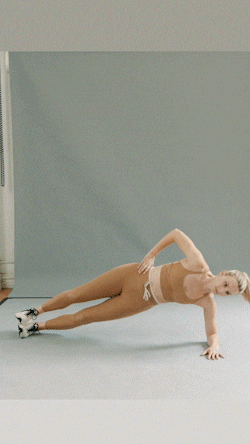
22. Side Plank Hip Lift
How To Do It
- Get into a side plank position.
- Keeping your core tight and glutes squeezed, tilt and flex your hips straight up and down, maintaining tension in your obliques.
- Repeat on the other side.
Why It Works
This side plank variation will have your obliques working overtime. Strong obliques are important for spine health. They’ll help your abs pop, too.
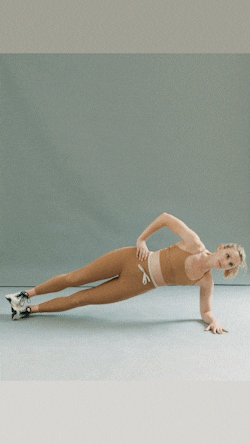
23. Hollow Hold
How To Do It
- Lay flat on your back with your arms extended over your head and feet straight out and together.
- Pressing your lower back into the floor, slightly curl up, lifting your legs and arms above the air.
- Keep tension in your core at all times and not to compensate with your lower back.
- You can regress the exercise by raising both your legs and arms higher until you get the strength to have it lower.
Why It Works
This exercise teaches you how to keep your pelvis tucked and core engaged. This will help you avoid compensating with your lower back during other exercises.
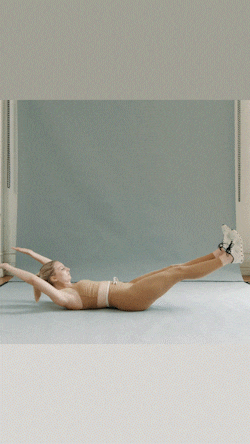
24. Squat Jumps
How To Do It
- Start with feet shoulder width apart, and toes pointed slightly out.
- Push your hips back, as if sitting in a chair. Lower yourself until your hips are parallel to the ground.
- Drive through your heels, exploding off the ground to jump as high as you can.
- Land on the soles of your feet, and go straight into the next squat.
Why It Works
This version of a squat is great for building explosive strength and power. It targets your fast twitch muscle fibers to help pack on more mass, too.
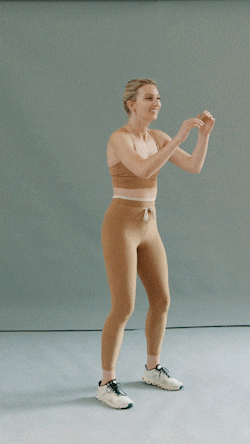
25. Jump Lunges
How To Do It
- Lunge forward until your rear knee is hovering a few inches off the ground.
- Jump up as high as you can and switch legs so you land with the opposite leg in front of your lunge.
- Land soft with your knee tracking straight before jumping up and switching again.
Why It Works
Jump lunges hit core and hip stability, lower body explosion, and heart rate all in one go.
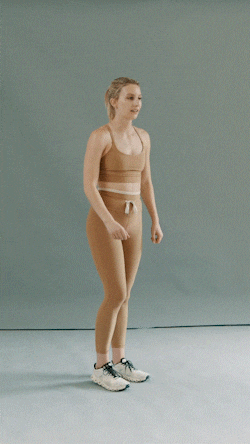
26. Pencil Jumps
How To Do It
- Begin by standing with your feet shoulder-width apart and a slight bend in your knees.
- Grip the floor with your feet and quickly lower into a quarter-squat position by bending your knees and hips slightly.
- Explosively push your feet into the ground to jump into the air. Focus on being quick and powerful to jump as high as you can.
- Land on the balls of your feet, quickly rebounding for another rep.
Why It Works
With practice, pencil jumps can boost your leg power and vertical by activating the fast twitch muscles in your glutes, quads, hamstrings, and calves.
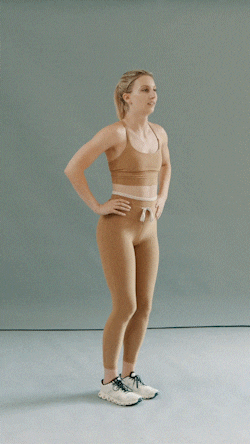
27. Broad Jump
How To Do It
- From a standing position, do a quick ¼ squat.
- Swing your arms back and use them to propel yourself forward as you jump as high and as far as possible.
- Land quietly on the soles of your feet.
- This move can definitely boost your cardio, but you’ll see better strength and power gains by resting when needed so you can put your best into each rep.
Why It Works
The broad jump culminates at one specific, explosive movement—targeting your fast-twitch muscle fibers to build muscle mass and athleticism.
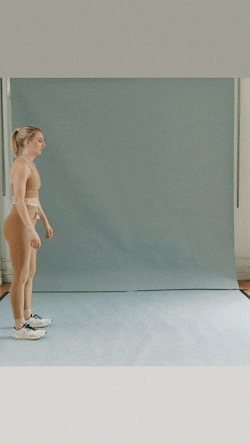
28. Plyo Pushup
How To Do It
- You can start by either placing your hands on a bench, or on the ground shoulder width apart. Stack your wrists below your shoulders.
- Lower yourself with control until your chest is hovering a few inches above the floor.
- Explode up, pushing your body up into the air.
- Land soft and get back into starting position before performing another rep.
Why It Works
Plyo pushups are the perfect bodyweight exercise to target upper body explosion. This power is highly transferrable to explosive movements in the gym like the push press, or contact sports.
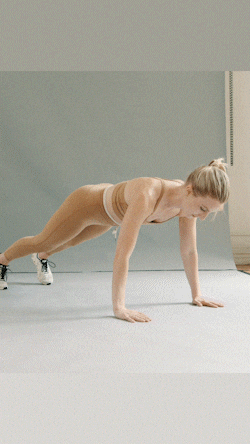
29. Mountain Climbers
How To Do It
- Start the exercise from a high plank position with your body in a straight line. Maintain tension in your glutes and core.
- Bring one knee to your chest. Pause for a beat, crunching your abs at the top, then bring it back, planting your toes on the ground.
- Switch legs, repeating the movement with the other knee.
- Repeat, alternating legs.
Why It Works
Mountain climbers require your upper body, core, and lower body to work in unison, making them a killer full body move. As your legs explode up towards your chest, your abs and obliques will kick on in the process.

30. Burpees
How To Do It
- Start with your feet shoulder-width apart and squat down until your thighs are parallel to the floor.
- From the bottom of the squat, place your hands on the floor and kick your legs out behind you into a high plank position.
- Complete a pushup then tuck in your legs at the bottom of the squat position.
- Drive upwards through your heels, and explode upward, jumping as high as you can.
Why It Works
Burpees are the ultimate combination exercise. They’re basically an explosive jump, squat, plank, and pushup all in one—meaning they activate nearly every muscle in your body. The more muscle mass you work, the more calories you burn, making burpees the supreme calorie burner.
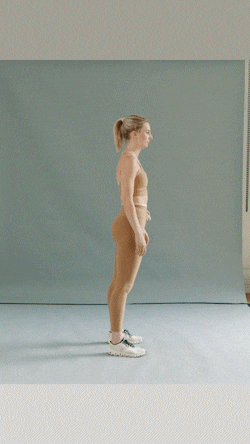
The Bottom Line
Bodyweight exercise is a functional way to build muscle that you can do anytime, anywhere. Cut the excuses and mix your favorite bodyweight exercises for a crazy effective workout.
References
1. Counts, B. et al (2016). The acute and chronic effects of “NO LOAD” resistance training. https://pubmed.ncbi.nlm.nih.gov/27329807/
2. La Scala Teixeira, C. et al (2019). Complexity: A Novel Load Progression Strategy in Strength Training. https://www.frontiersin.org/articles/10.3389/fphys.2019.00839/full



